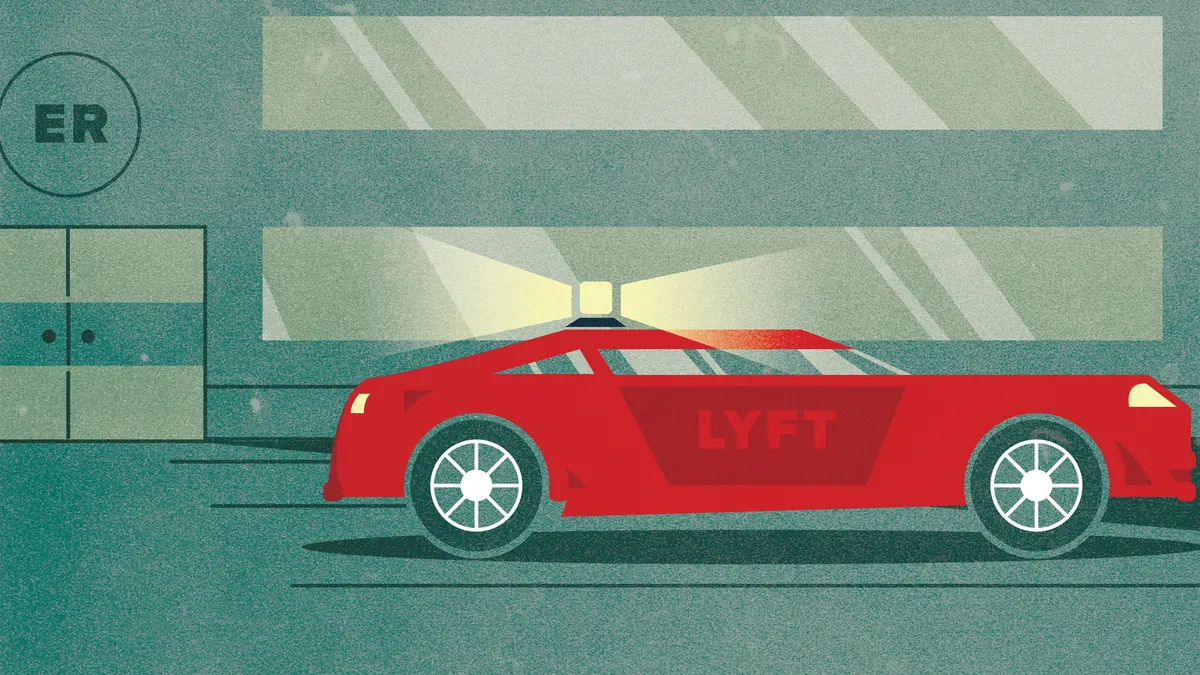An explosion of innovative tech is disrupting the care-delivery model, aiming for both cost savings and better outcomes. Uber’s partnership with MedStar Health to reduce patient no-shows, a huge cost-sink, and the expansive potential of drones to fill healthcare infrastructure gaps in remote areas are just two examples of ways in which healthcare providers are setting out to provide better care at lower cost.
Cost-saving innovations have also begun to extend to the healthcare employment model — something notably risky when it comes to compliance. One program offers a solution to staffing issues that connects freelance nurses with open positions using an entirely digital platform in an attempt to modernize the business. Others have opted for more ad hoc hiring processes for IT and transcription talent.
Either way, the “gig economy” has reached healthcare — and it looks like it's here to stay.
In managing talent, providers have to be careful to balance useful innovations with the letter of the law, something easily forgotten in the rush for the next big thing. We spoke with gig economy experts and compliance specialists to discover just how far providers can go when using independent healthcare workers and how to steer clear of potential legal pitfalls.
What does gig work in the healthcare space look like right now?
Healthcare providers have to manage an employee population with vastly different skill sets. But even in the diverse healthcare workplace, where special rules run rampant, some general guidance still applies.
Typically, the more specialized and trained the worker, the less likely they can be hired on as an independent contractor, Matt Stevenson, partner at Mercer, told HR Dive. And right now, most gig workers are on the lower end of the skill scale — especially in healthcare.
“Because of the way healthcare has been restructured, there’s been an explosion of employment at the low end,” Stevenson said. Increased calls for low-acuity care, like physical therapy and daily caregiving, have heralded the growth of contracted work. Convenience for both patient and provider also plays a part. Telehealth (while not specifically contract work, usually) allows doctors to sign up for specific hours to treat patients via phone or video, while digitization lets those doctors keep all records securely online. It brings a flexibility few office jobs can compete with.
Another bonus: cost.
“Incentives are changing,” Stevenson said. “You are now paying for results instead of the hospital getting paid more for you being in the hospital longer.”
As providers seek better outcomes for a lower price, contract work plays a pivotal role in improving care but keeping barriers low for patients. Caregivers can visit homes and encourage patient compliance, such as taking medicine and completing physical therapy, and hospitals can hire those workers on a job-to-job basis, which is cheaper overall.
Providers must keep liability in mind when hiring out independent gig work, however. Hospitals in need of on-demand talent often retain nursing agencies that take on liability, employee background checks and other major risk issues in exchange for hefty fees. Independent workers tend to be cheaper, but come with much higher risk.
Managing liability and questions of quality
Classification is a perpetual headache for employers in many industries. Simply calling someone an independent contractor doesn’t cut it, Shanna Wall, labor law attorney at ComplyRight, said. Nationally, employers have to satisfy a slew of tests under regulations from the IRS, the U.S. Department of Labor and individual states meant to protect workers from exploitation. Courts have been in on the action, too.
Most tests balance on one key question: How much independence does an individual worker have? More specifically, does an employer focus on a result alone or the job itself? Is the worker using their own equipment and deciding their own hours, or is an employer dictating that? The more control an employer has, the riskier independent contractor classification can be.
But that’s not all. Medical personnel have to deal with strict laws on private health information, such as the Health Insurance Portability and Accountability Act (HIPAA). Contractors must be trained on what those and other rules require.
“How do you ensure the quality of care provided by the gig person is okay?” Stevenson said. “How do you keep costs down but ensure quality? You may pay $15 an hour, but that is low for healthcare.”
Worse, if something goes wrong, the provider is on the hook. By giving jobs to outside workers, providers risk losing strict control over the quality of care and, in the long term, their brand. Employers already struggle to gather data on full-time employees. Gathering data on the success of gig workers is even tougher, since the very nature of the relationship is fairly low-touch.
That’s partly why the agency model has lasted for so long, as they take on most of those risks and give hospitals the ability to up- or downsize when needed. But the costs are real.
In the future: Outsourcing some jobs but not all
For that reason, employers may want to consider their needs on a sliding scale of risk versus efficiency. Joint employer cases are still working their way through the courts. Uncertainty remains the rule of the day. “It’s always best practice to err on the side of an abundance of caution,” Wall said.
As far as the future goes, that uncertainty renders predictions suspect. Digitization has encouraged the contracting out of some support services, including diagnostic work such as radiology. As long as a radiologist has an internet connection, they can read a scan and send their analysis from anywhere.
Innovation continues in the on-demand non-emergency medical transportation space, too. Circulation, a Boston-based provider of medical transportation, recently raised $10.5 million in a funding round that included participation from leading names in healthcare such as the Boston Children’s Hospital, Humana and NextGen Venture Partners. Experts believe that ride-share partnerships could save billions of dollars usually spent by Medicaid.
But as more employers focus on ways to engage employees, contract workers will largely remain outside those efforts, Stevenson said. Gig workers usually seek independence for a reason, be it the flexibility of hours or ability to set their own pay. They prefer autonomy, and don’t want to be bogged down in HR processes.
“If I really cared about engagement, I would bring them in-house,” Stevenson said. But as long as demand is high, treatment of contract workers will have to remain top notch to keep a steady flow of candidates in the pipeline.
The influx of independent work has enabled unprecedented flexibility for workers and access to talent for employers. But above all, employers must be wary of the risks to truly enjoy the perks of independent contracting.
“You think you are safe from compliance because they are gig workers, but really, it’s the opposite,” Wall said.





















